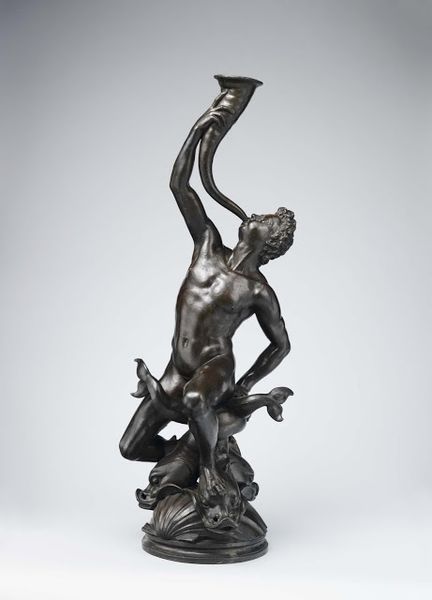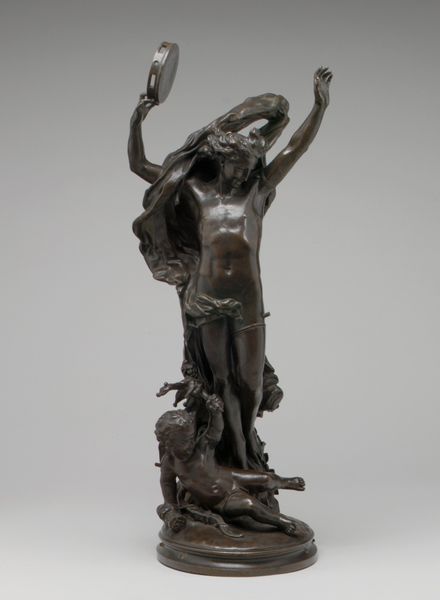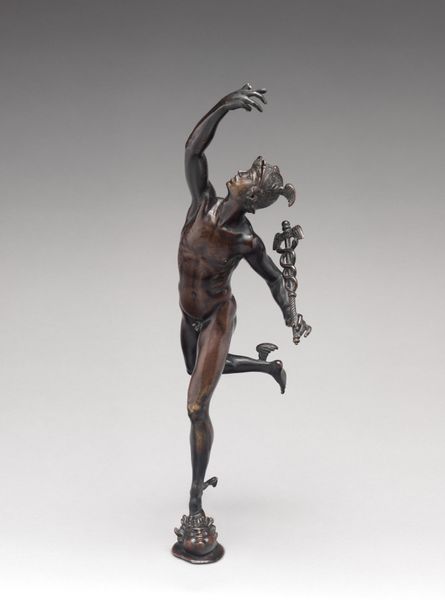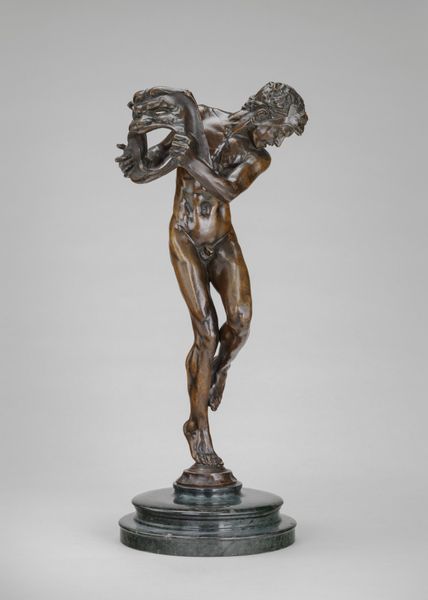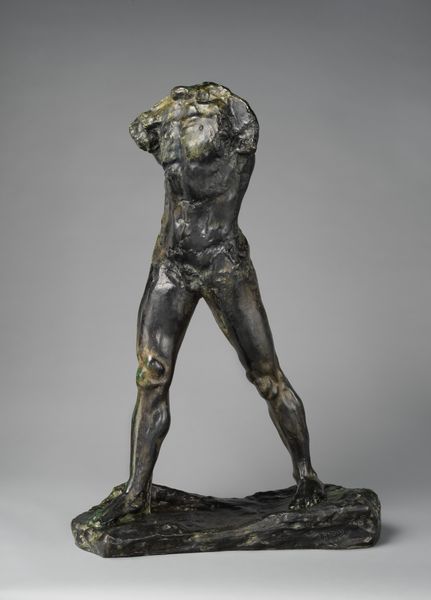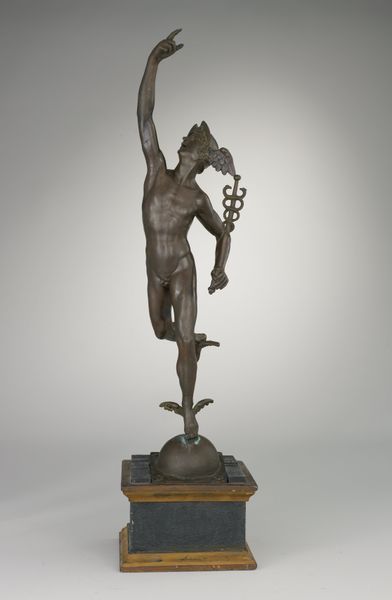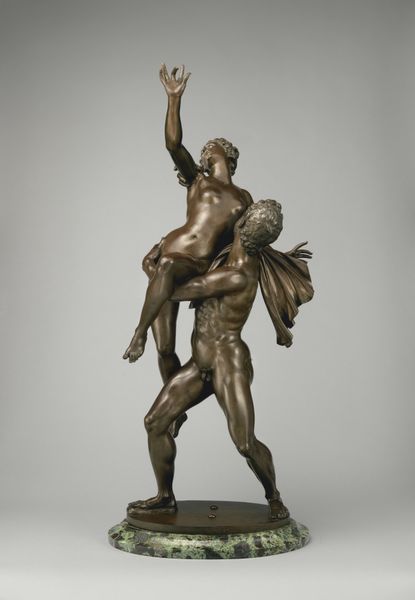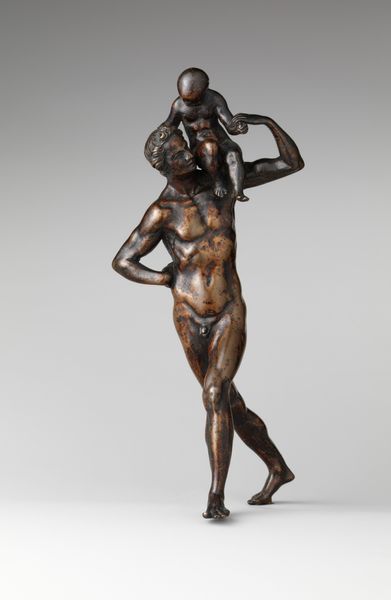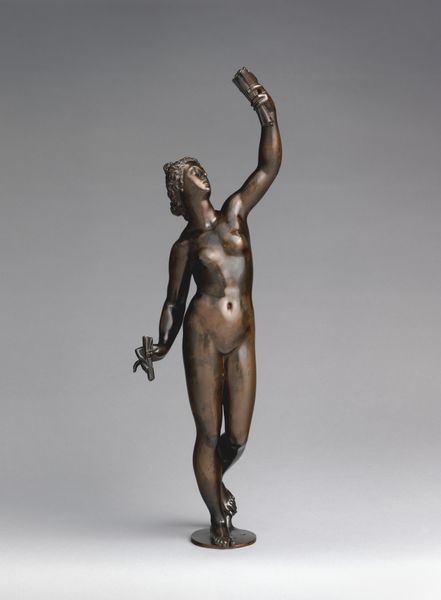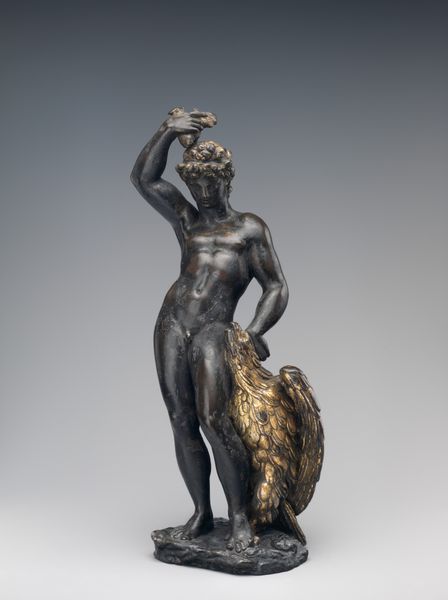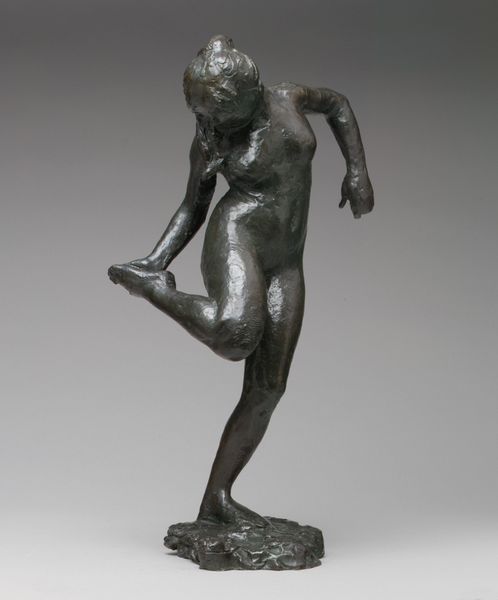
bronze, sculpture
#
sculpture
#
bronze
#
mannerism
#
figuration
#
sculpture
#
history-painting
#
decorative-art
#
3d character modeling
Dimensions: Height: 17 1/2 in. (44.5 cm)
Copyright: Public Domain
Curator: The work before us is "Hercules and the Erymanthian Boar," a bronze sculpture attributed to Giambologna, likely created between 1630 and 1665. Editor: Oh, it's magnificent! Just the sheer weight of the image strikes me. You feel every burdened step he's taking. Is it just me, or is there a melancholy to it as well? Curator: I see what you mean. This sculpture depicts the fourth labor of Hercules, a task set by Eurystheus to capture the ferocious Erymanthian boar alive. Hercules carries the beast on his shoulders, a symbol of triumph and strength, but as you observe, there's also weariness etched in his stance. The symbolism here is dense with the weight of duty. The boar itself embodies primal, untamed forces subdued by the hero's intellect and strength, so we are looking at a layered allegory of sorts. Editor: Right, I get it! And even Hercules's musculature isn't presented as sheer power; it's more about endurance, about carrying the weight of, well, everything. It's strangely relatable! I mean, we're all carrying some boar or another, aren't we? This reminds me a lot about one of those existential allegories in which Hercules' labors suddenly stand for contemporary psychological struggles and society as a whole. Curator: Exactly! The Mannerist style, so evident here, allows for this complex play of emotion. While it glorifies physical prowess, it also captures a deeper psychological tension, the burden of heroism, of leadership, perhaps. Giambologna, through this dramatic composition and bronze material, prompts us to think beyond the myth, making the viewer see the many connotations. Editor: I am now starting to perceive what you mention. You know, there is a lot more going on with this artwork than meets the eye. At first sight I simply thought, "Here goes another Renaissance artwork," but now I understand it is a very delicate image with an emotional landscape worth to examine. Thank you. Curator: And thank you for bringing to the surface those very sensitive feelings that can easily go undetected to an inattentive viewer. It is, as you noticed, much more than just an illustrative tale or just an iconic artwork of the European Renaissance.
Comments
No comments
Be the first to comment and join the conversation on the ultimate creative platform.

